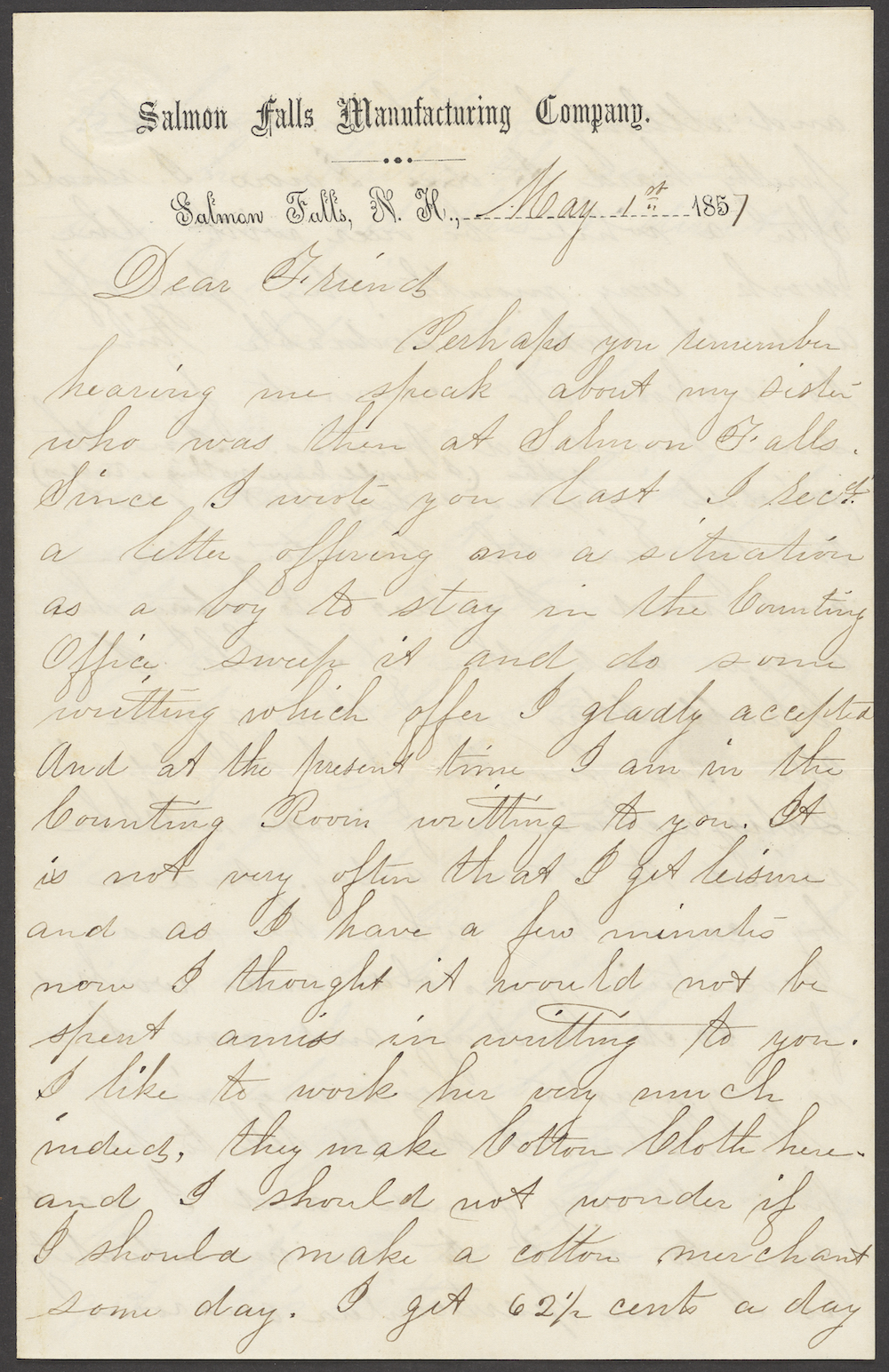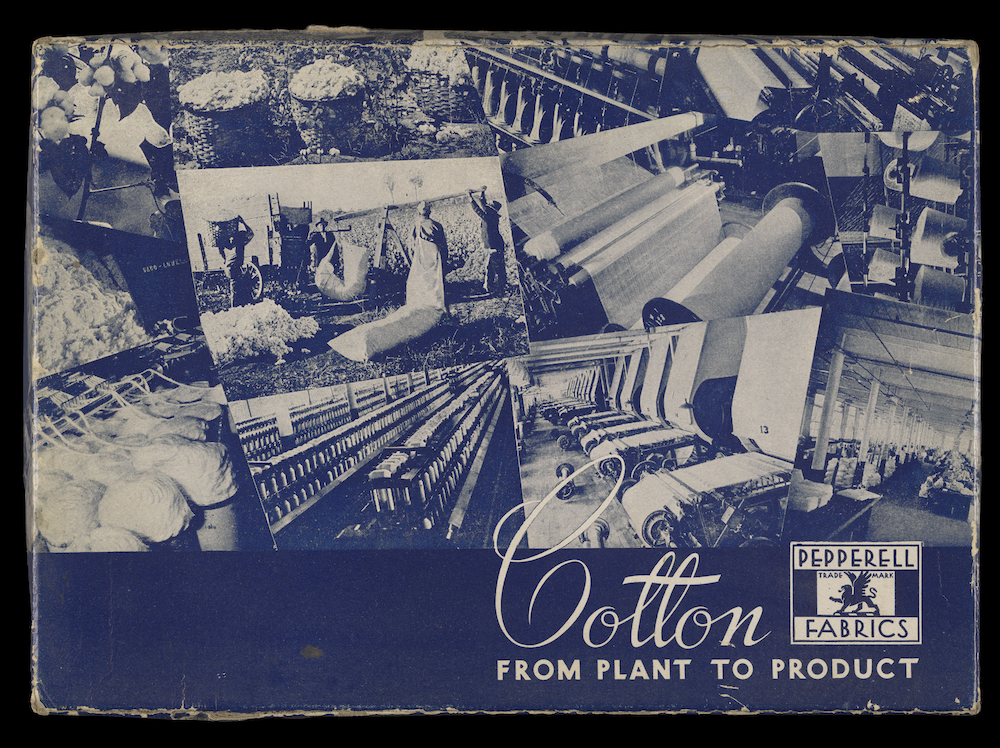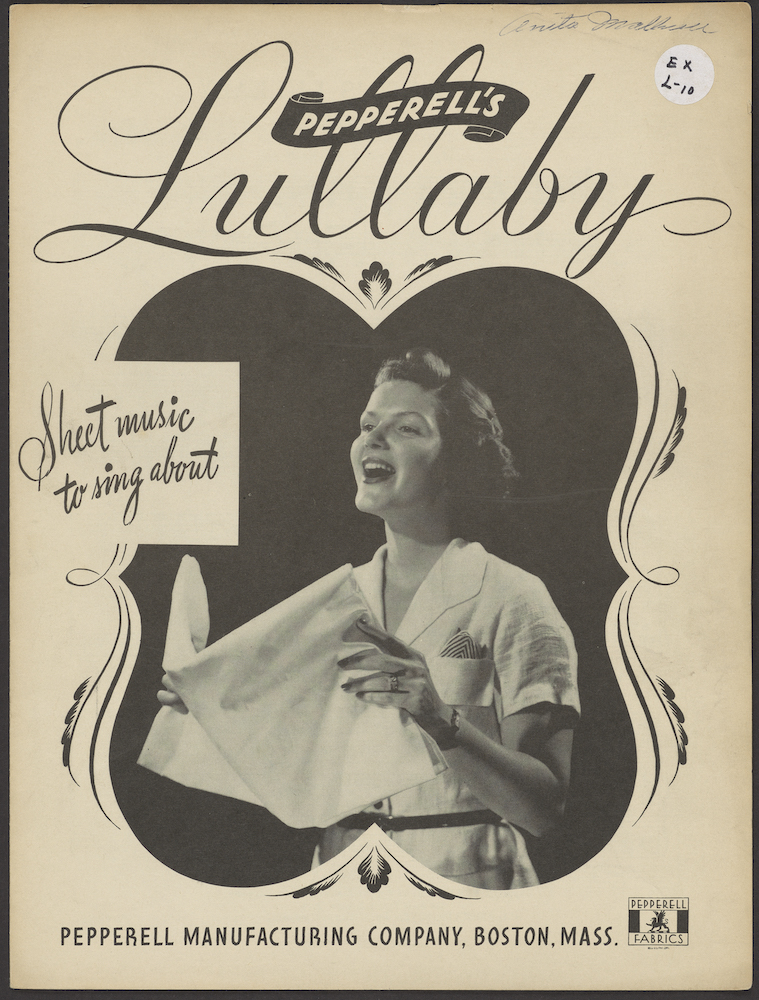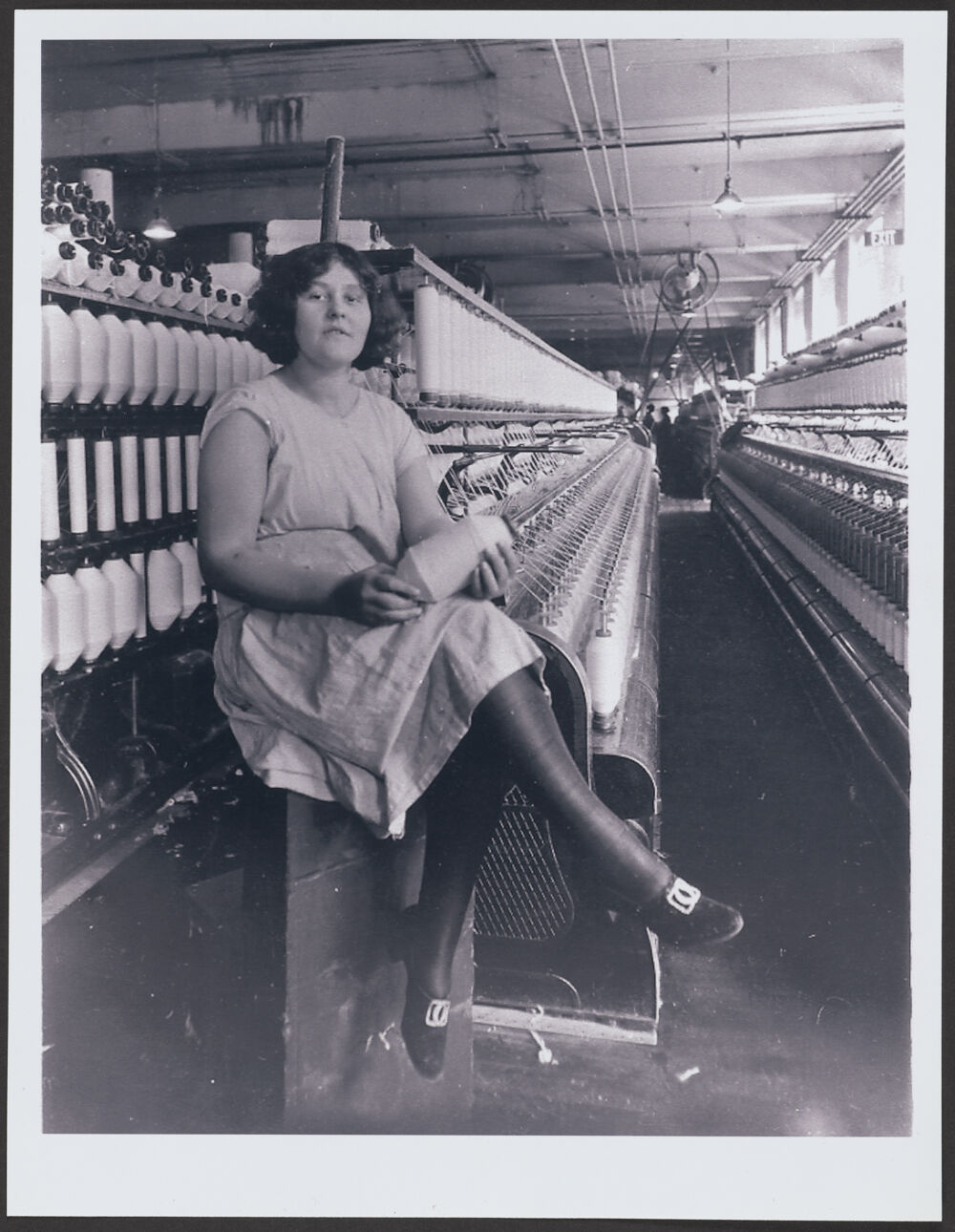

46. Letter to Master William F. Fletcher, Enfield, Connecticut, from John [Merrianz?]
[unknown author], 1857
Courtesy of Peter Michaud.

Click on image to see larger version.
Written on Salmon Falls Manufacturing Company letterhead, [Merrianz] very likely worked in the accounting department. He comments about his salary (75 cents a day) and plans to stay for six months “and if I like I shall stay more than a year…” Included is the envelope.
47. Pepperell Fabrics: Promotional box which includes samples of the cotton fabrics.
[unknown author], 1940s

Click on image to see larger version.
Included is a booklet entitled Our Greatest Industry illustrating how cotton cloth is made.
48. Lucia Matteau: Paycheck envelope for labor week ending February 25, 1928: $20.25.
[unknown author], 1928

Click on image to see larger version.
Lucia worked at the Lincoln Mill (part of Pepperell) from age 17 to 68 when she retired.
49. Joseph Matteau: Life membership card with the Textile Workers Union of America, March, 1955.
[unknown author], 1955

Click on image to see larger version.
50. Whitin Cotton Card-Room Machinery: Manual owned by Horace H. Hoyt: “Pepp. Mfg. Co.” 4th ed. 1925.
[unknown author], 1925

Click on image to see larger version.
51. The Pepperell Sheet: Published by Pepperell Manufacturing Company, June, 1948.
[unknown author], 1948

Click on image to see larger version.
52. The Pepperell News Sheet, Volume XXIII, June, 1948, Number 6.
[unknown author], 1948

Click on image to see larger version.
53. Two engraving proofs and one letterhead. Five engravings – Pepperell Fabrics.
[unknown author], undated
Courtesy of Mark A. Matteau

Click on image to see larger version.
54. Cheeses Yarn
[unknown author], undated

Click on image to see larger version.
55. Continental Mills, Lewiston, Me.: Ad for Continental Mills featuring a map of the United States with territories.
[unknown author], Ca. 1912

Click on image to see larger version.
The site of the mill was originally a small wooden mill in 1858. In 1866 it was purchased by the Continental Company and expanded into a much larger complex. A series of tenement houses were built to accommodate the large influx of workers.
56. Pepperell’s Lullaby: “Sheet music to sing about”
Francis Whiting, 1938

Click on image to see larger version.
Published by the Pepperell Manufacturing Company, Boston, Massachusetts
57. Female mill worker at Bates Mill
[unknown author], ca. 1920

Click on image to see larger version.
58. Androscoggin Mills
[unknown author], undated

Click on image to see larger version.
59. Androscoggin Mill Yard: Conant Bros., Lewiston; n.d. Stereograph.
[unknown author], undated

Click on image to see larger version.
60. Shuttle: Biddeford Textile Company, 1995: “June 29, 1995, 2:57 pm Last W-3 loom ran at Biddeford Textile Company”.
[unknown author], 1995

Click on image to see larger version.
A shuttle is a tool designed to neatly and compactly store a holder that carries the thread of the weft yarn while weaving with a hook. Weft are the threads that are horizontal that pass through the warp threads via the shuttle during the weaving process.
61. Baby Pepperell Blanket: 36 x 50 inches in its original box.
[unknown author], Ca. 1940s

Click on image to see larger version.
62. Chock block: Laconia Mills.
[unknown author], Ca. 1850.

Click on image to see larger version.
Used to stamp bolts of cloth ready for shipping.
63. Payroll ledger: Laconia Company, 1852.
[unknown author], 1852
Courtesy Biddeford Mills Museum

Click on image to see larger version.
64. “The Lowell Factory Girl,”
Harriet Jane Farley , 1842

Click on image to see larger version.
The song is attributed to Harriet Jane Farley, an American writer, abolitionist and editor of The Lowell Offering from 1842 to 1845. She also edited The New England Offering from 1847 to 1850. Born in Claremont, New Hampshire, on February 18, 1812, Harriet was the sixth of ten children born to Reverend Stephen and Lucy Farley. At age 25 she left New Hampshire to work in the textile mills of Lowell, Massachusetts. A high literacy rate among young female workers enabled Harriet to form a writing group with her fellow mill operatives, which grew into the magazine The Lowell Offering. The song is among the many contributions by mill girls which included letters, stories, essays and sketches. The song sums up the frustrations of a mill girl who left her country to work in the mill thinking this type of work would earn her a good wage. Long hours, low pay, a strict overseer, and no real life has led to this factory girl’s decision to leave and perhaps, as she expressed, “now soon you’ll see me married to a handsome little man….”
65. The Factory Girl’s Garland, Vol. 1, Number 8, April 13, 1844
A.R. Brown, 1844

Click on image to see larger version.
Published by A.R. Brown at Exeter, New Hampshire, this short-lived newspaper was primarily directed at mill girls or “operatives.” It included a combination of poems, articles such as “How to Choose a Husband” and the “Beauties of the factory system,” and various advertisements. The newspaper also published a list of subscribers; among them were mill agents from New Hampshire, Maine and Massachusetts. The paper endorsed “womanly virtues” such as modesty, frugality and industry. It also encouraged the girls to read and become educated. Most of the newspapers geared to the mill girls came and went during the 1840s, with titles such as The Factory Girl’s Album, The Messenger, and Wreath and Garland.